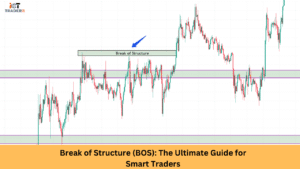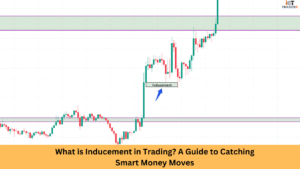Do you want to trade like smart money in 2025? If yes, the ICT Silver Bullet Strategy is your hidden weapon. This intraday technique, originally developed under the Inner Circle Trader (ICT) mentorship, focuses on exploiting market inefficiencies within a specific time window.
In this article, we will walk you through how the strategy works, why it’s still powerful in 2025, the best time to use it, step-by-step setups, and how to manage your trades for consistent profits — all using simple, beginner-friendly language.

What Is the ICT Silver Bullet Strategy?
The Silver Bullet Strategy is an intraday trading technique that focuses on taking high-probability trades during specific kill zones, particularly the 10 AM to 11 AM New York time window.
This strategy is rooted in smart money concepts, where traders anticipate liquidity grabs, breaker blocks, and order blocks to identify reversals or continuations. It’s based on price manipulation patterns used by institutional traders.
The idea is simple: wait for the market to induce you in one direction, grab liquidity, and then reverse. The “Silver Bullet” is your chance to strike during that quick reversal.
Why Traders Still Use It in 2025
Even with all the new trading bots and AI tools out there, the Silver Bullet remains relevant in 2025 for these reasons:
- Liquidity never changes – Big banks still need to fill large orders.
- Retail traders still get trapped – That means opportunities continue to exist.
- It fits well with modern-day ICT concepts – Like Fair Value Gaps (FVG), SMT Divergence, and Judas Swings.
- It’s a fast method – Perfect for those who want quick setups and outcomes.
Whether you are a day trader or a scalper, this strategy gives you a structured framework in a chaotic market.
The Best Time to Use the Strategy
Timing is critical. The best window for Silver Bullet setups is 10 AM to 11 AM EST, after the initial volatility of the New York Open has settled.
Here’s why:
- The market forms its initial high or low.
- Liquidity pools from the London session are often swept.
- Institutions show their hand during this hour.
Always check the economic calendar and avoid using the strategy during high-impact news like NFP or FOMC speeches.
Where to Find Liquidity for Silver Bullet Trades
Smart money doesn’t randomly buy or sell. It hunts for liquidity zones where retail traders place stop losses.
You can find these zones:
- Above equal highs or below equal lows
- Around the session opens (London and New York)
- Near order blocks and FVGs
Use a clean chart (no indicators!) and mark:
- Asia session highs/lows
- London highs/lows
- Previous day’s highs/lows
These act as magnets for price — once price grabs liquidity at those points, look for Silver Bullet entries.
Best Trading Session for Silver Bullet
London session wins hands down. I’ve tested this strategy across every major session, and London delivers the most consistent results.
Why London Dominates 43% of global forex volume flows through London. When that much money moves through one session, patterns become reliable. European banks follow strict algorithmic schedules that create predictable opportunities.
The 7:00-8:00 AM GMT window captures the initial positioning moves. Banks adjust overnight positions and prepare for the day ahead. These moves often set the tone for the entire session.
New York as Backup New York works well, but it’s more news-driven. American traders react to data releases and economic events. This makes the session less predictable for Silver Bullet setups.
The 1:30-2:30 PM EST window remains the sweet spot for New York trades. Algorithmic trading peaks during lunch hour as institutions rebalance portfolios.
Session Overlap Benefits The London-New York overlap creates the ultimate Silver Bullet environment. Dual institutional activity means stronger moves and clearer signals. My highest-reward trades happen during these four hours.
Skip Fridays unless you see perfect setups. Position squaring ahead of weekends creates unpredictable price action.
Which Forex Pairs Are Best for Silver Bullet?
Not all currency pairs behave the same way. Some follow institutional patterns religiously, while others move chaotically.
EUR/USD – The King: Highest liquidity, tightest spreads, most predictable institutional behavior. This pair follows Silver Bullet principles better than any other. Start here if you’re new to the strategy.
GBP/USD – The Mover Pound movements are sharp and decisive. When GBP/USD commits to a direction during Silver Bullet windows, it moves fast and far. Higher volatility means bigger profits but requires wider stops.
USD/JPY – The Technician Japanese institutional trading follows strict patterns. This pair respects technical levels religiously and provides excellent Silver Bullet opportunities during both Asian and New York sessions.
AUD/USD – The Commodity Play: Australian Dollar movements often correlate with commodity prices. When oil or gold trends strongly, AUD/USD Silver Bullet setups become even more reliable.
Stick to major pairs initially. Exotic currencies have wider spreads and less predictable institutional flow. Master the basics first, then explore alternatives.
Cross pairs like EUR/GBP offer unique opportunities but require understanding multiple central bank policies simultaneously.
Step-by-Step Trade Setup
Here’s exactly how I execute Silver Bullet trades. This process has evolved through years of trial and error.
Step 1: Pre-Session Preparation
Mark yesterday’s high and low on your chart. Identify obvious liquidity zones – areas where retail stops cluster. Note any major news scheduled for the session.
Set up multiple timeframes: 1-minute for entries, 5-minute for confirmation, 15-minute for context. Clean charts work better than cluttered ones.
Step 2: Opening Bell Analysis
Watch the first 15 minutes closely. Institutional activity shows up immediately through aggressive moves or fair value gap creation. This early action often telegraphs the session’s direction.
Look for initial liquidity sweeps. If price quickly takes out yesterday’s high or low, institutions are positioning for moves in the opposite direction.
Step 3: Liquidity Zone Identification
Mark where stops are likely clustered. Recent swing highs/lows, equal levels, and round numbers are prime candidates. These zones become your hunting grounds.
Use order flow tools if available. Seeing actual order clusters removes guesswork from liquidity identification.
Step 4: Fair Value Gap Spotting
In Fair Value Gap spotting, three-candle patterns with middle candle gaps that don’t get filled. These inefficiencies must be addressed by institutional algorithms later. Position yourself for the inevitable fill.
Step 5: Entry Execution
Wait for the price to approach your liquidity zone during the Silver Bullet window. Look for rejection – long wicks, hammer candles, or aggressive bounces.
Enter with confirmation, not hope. Set stops beyond the liquidity zone, usually 15-20 pips past significant levels. Target the next major liquidity area or fair value gap.
Step 6: Trade Management
The first 30 minutes are critical. If the move doesn’t materialize quickly, consider exiting at breakeven. Silver Bullet trades should work immediately.
The move stops at breakeven once the price moves favorably. Scale out partial profits at intermediate levels while letting winners run.
How to Manage Risk in Silver Bullet Trades
Risk management separates profitable Silver Bullet traders from the rest. The strategy’s high win rate can breed overconfidence – don’t let it.
Position Sizing Rules: Never risk more than 1% per trade, regardless of how confident you feel. Calculate position size based on stop distance, not arbitrary amounts.
I use a simple formula: Account Size × ×Risk%k % ÷ Stop Distance = Position Size. This keeps risk consistent across all trades.
Stop Loss Placement: Place stops beyond liquidity zones, not at arbitrary pip distances. If you’re trading a liquidity sweep at 1.2050, put your stop at 1.2020 or lower.
Avoid obvious stop levels where other traders might place theirs. Smart money hunts these areas specifically.
Profit Taking Strategy: Take 50% profits at 1:1 risk-reward. Let the remainder run to 1:2 or higher. This approach locks in gains while maximizing winning trades.
Set alerts at key levels rather than watching charts constantly. Overmonitoring leads to premature exits and emotional decisions.
Time-Based Management: Exit trades that don’t move within 30 minutes. Silver Bullet setups should work quickly due to institutional momentum.
Avoid holding positions through major news releases unless you’re extremely confident in the setup.
Daily Loss Limits: Set maximum daily losses and stick to them. Even the best Silver Bullet traders have losing days. Protecting capital during drawdowns is crucial for long-term success.
Extra Tools to Improve the Strategy in 2025
Technology has transformed Silver Bullet trading. These tools can significantly improve your execution and results.
Advanced Charting TradingView Pro offers custom indicators for fair value gaps and order blocks. Automated highlighting saves time and reduces manual errors.
Volume profile tools show where institutional interest concentrates. This information confirms liquidity zones and validates trade ideas.
Order Flow Analysis Level 2 data reveals real-time institutional activity. While not essential, this information provides valuable confirmation for Silver Bullet entries.
Footprint charts show volume at each price level, helping identify where smart money accumulates positions.
Economic Calendar Integration Platforms that highlight news releases directly on charts prevent trading during disruptive events. This simple feature has saved me from numerous bad trades.
Mobile Capabilities: High-quality mobile apps let you monitor Silver Bullet setups away from your main setup. Quick execution capabilities are essential for time-sensitive opportunities.
Backtesting Tools Test Silver Bullet variations on historical data. This helps optimize entry criteria and profit targets for different market conditions.
Correlation analysis prevents overexposure to similar currency movements. Taking multiple correlated trades increases risk unnecessarily.
Common Mistakes and How to Avoid Them
Most traders fail with the Silver Bullet strategy due to these avoidable mistakes:
| Mistake | Fix |
| Trading before 10 AM | Wait for the kill zone |
| Entering without liquidity grab | Confirm the liquidity sweep first |
| Ignoring FVG/OB entry zones | Always use Smart Money entry models |
| Overtrading | One trade a day is enough |
| Poor risk management | Use proper lot sizing and SL |
Discipline separates amateurs from professionals.
Conclusion
The ICT Silver Bullet Strategy is still highly effective in 2025 — if used correctly. It’s not just about finding a setup; it’s about understanding why the market moves the way it does.
Stick to the kill zone, wait for liquidity sweeps, and execute only when all conditions align. Combine it with solid risk management and smart journaling, and you’ll be far ahead of most retail traders.
If you want to trade like smart money, this strategy is your bulletproof start.
FAQs
Can beginners use the Silver Bullet strategy?
Yes, but they should start with demo trading to understand timing, entries, and FVG concepts first.
Is it suitable for crypto or only forex?
It works best on Forex and indices like NASDAQ. Crypto markets behave differently, especially due to their 24/7 nature.
How much capital do I need to start?
You can begin with as little as $100 using a prop firm demo or a small funded account — just ensure proper risk per trade.
Is this strategy profitable long-term?
Yes, if combined with discipline, risk management, and constant journaling of your trades.



